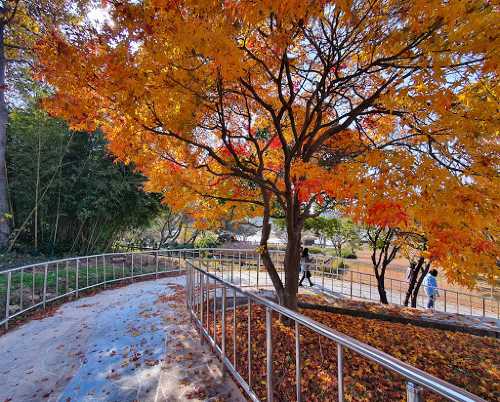Popular Trip Moments
Tiny Park, Huge Vibes | Climbed to 666m | Misty Mountain Magic at Wolchulsan | Cheonhwangbong, Outta Breath, In the Clouds, Lovin’ Life | 🕍 Dogapsa Temple: A Peaceful Escape into Korea’s Spiritual Heritage | Yeodameun Dyeing Experience at Gyubang Culture Center | Yeongam Hanok Cafe Yedam | Mokpo Travel Accommodation Recommendation Hotel Hyundai by Lahan Mokpo🌊 | Lahan Hotel is a great place for quiet healing | Mokpo's only private pool villa✨ | Jeollanam-do vacation is "Hotel Hyundai by Lahan Mokpo" | Wolchulsan Cafe | Yeongam Peak Niche | Yeongam Wolchunsan | Yeongam Cafe | Yeongam rape flowers | Yeongam Cherry Blossoms | Yeongam Wangin Doctor | A fantastic ocean view, sunset, and Christmas at the Lahan Hotel Mokpo at the end of the year🎄❤️ | Yeongsanjae, a quiet Hanok accommodation in Yeongam! | This is the Rice Culture Hall of the Agricultural Museum in Yeongam-gun, Jeollanam-do, South Korea. | This is the Agricultural Museum in Yeongam-gun, Jeollanam-do, South Korea. | "Top of the mountain, seaside, comfortable and warm" | This is the hotel I use every time I go to Yeongam. Thanks to Trip.com, I am enjoying an even more fulfilling trip these days. | Saesil of Ambience, a large garden cafe with native creatures🌸 | Deokjin Tea Field | Wolchulsan Dogapsa Temple | Our house today, where all our memories “remain”🏠
Recommended Attractions at Popular Destinations
Popular Attractions in Bangkok | Popular Attractions in Manila | Popular Attractions in Tokyo | Popular Attractions in Taipei | Popular Attractions in Hong Kong | Popular Attractions in Seoul | Popular Attractions in Kuala Lumpur | Popular Attractions in Los Angeles | Popular Attractions in Shanghai | Popular Attractions in New York | Popular Attractions in Shenzhen | Popular Attractions in Osaka | Popular Attractions in Singapore | Popular Attractions in London | Popular Attractions in Guangzhou | Popular Attractions in San Francisco | Popular Attractions in Beijing | Popular Attractions in Macau | Popular Attractions in Bali | Popular Attractions in Jakarta | Popular Attractions in Paris | Popular Attractions in Ho Chi Minh City | Popular Attractions in Istanbul | Popular Attractions in Phuket | Popular Attractions in Chicago | Popular Attractions in Seattle | Popular Attractions in Toronto | Popular Attractions in Orlando | Popular Attractions in Cebu | Popular Attractions in Chiang Mai
Popular Restaurants in Yeongam-gun
TIME | 라이브7080 | Gyeong-In | Dongrak Sikdang | Dokcheon Sikdang | Dongin | Backbone Pork Back-Bone Stew | Eonni Hof | Wolchul Mountain Abalone Gal Nak Stew | Uyeong Gukbab | Seol Soup | Taebaek Restaurant | Geumho Garden | Geumsu Beautiful Land of Korea | Green Restaurant | Chaempieon Karaoke | Yeomyeong Chinese Restaurant | Famous Meal | Roasted Chicken | Cheogajip Chicken Hof | Geumjeong Yeomso Stew | Skewers Grill Speciality | Free Ma Hall | Blue House | Grill Cuisine Speciality | Cheong Ha Restaurant | Hanultari | Bikboi Seasoned Chicken | Isak Toast | Dream Ui Palace
Popular Ranked Lists
Popular Premium Hotels in Central Kalimantan | Popular Premium Hotels in Dong Nai Province | Top 20 Trending Attractions in Shanghai | Top 50 Must-Visit Restaurants in Auckland | Popular Trending Attractions in Suzhou | Popular Premium Hotels in Sakarya Province | Top 20 Trending Attractions in Hong Kong | Popular Premium Hotels in Sirnak Province | Popular Premium Hotels in Thanh Hoa Province | Top 10 Trending Attractions in Kunming | Popular Premium Hotels in County Kildare | Popular Trending Attractions in Singapore | Popular Premium Hotels in East Kazakhstan | Top 50 Must-Visit Restaurants in Chengdu | Popular Premium Hotels in Ibaraki Prefecture | Top 50 Must-Visit Restaurants in Sapporo | Popular Trending Attractions in Luoyang | Popular Premium Hotels in Bujumbura Mairie | Popular Premium Hotels in Tottori Prefecture | Popular Luxury Hotels in Al Jazirah Al Hamra | Popular Trending Attractions in Tonglu | Popular Premium Hotels in West Sussex | Popular Trending Attractions in Tianjin | Top 50 Must-Visit Restaurants in Hanoi | Top 10 Trending Attractions in Wuhan | Popular Premium Hotels in Hatay Province | Top 50 Must-Visit Restaurants in Bali | Top 50 Must-Visit Restaurants in Chaozhou | Top 50 Must-Visit Restaurants in Frankfurt | Popular Premium Hotels in Kemerovo Oblast
About
Payment Methods
Our Partners
Copyright © 2025 Trip.com Travel Singapore Pte. Ltd. All rights reserved
Site Operator: Trip.com Travel Singapore Pte. Ltd.
Site Operator: Trip.com Travel Singapore Pte. Ltd.























